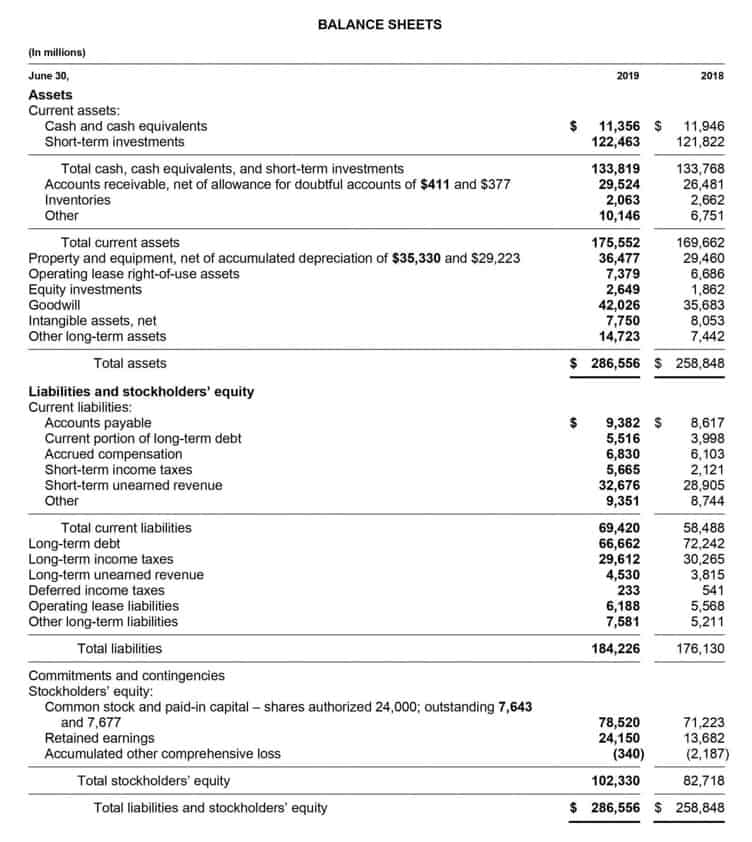That makes it tough to keep track of the cost basis on those shares and their relative changes in value. The investor can calculate a weighted average of the share price paid for the shares. To do so, multiply the number of shares acquired at each price by that price, add those values, then divide the total value by the total number of shares. When unit of inventory is sold, the weighted average method of costing inventory takes the average cost of all inventories currently available. When average costing method is used in a perpetual inventory system, an average unit cost figure is computed each time a purchase is made. This average unit cost figure is then used to assign cost to each unit sold until a new purchase is made.
By using a weighted average, please calculate inventory cost, total inventory in Balance Sheet, and Cost of Goods Sold. Weighted average allocate the same cost to all product, it happens when the items are hard to assign a specific cost. Most of the products are quite similar or the same, so it is not necessary to separate the costs of each inventory type. Another reason why businesses would use LIFO is that during periods of inflation, the LIFO method matches higher-cost inventory with revenue.
LIFO Method
LIFO better matches current costs with revenue and provides a hedge against inflation. Materials are issued from the store at the established average cost until a new purchase is recorded. However, values in operating profit vs net income a data set may be weighted for other reasons than the frequency of occurrence. For example, if students in a dance class are graded on skill, attendance, and manners, the grade for skill may be given greater weight than the other factors. The articles and research support materials available on this site are educational and are not intended to be investment or tax advice. The weighted average method is one of the most common methods of inventory and cost accounting.
The last in, first out (LIFO) accounting method assumes that the latest items bought are the first items to be sold. With this accounting technique, the costs of the oldest products will be reported as inventory. It should be understood that, although LIFO matches the most recent costs with sales on the income statement, the flow of costs does not necessarily have to match the flow of the physical units.
Company
- Decisions such as selecting an inventory accounting method can help businesses make key decisions in relation to the pricing of products, purchasing of goods, and the nature of their production lines.
- Generally speaking, companies that may have difficulty distinguishing between older and newer inventory will rely on the weighted average formula.
- The weighted average inventory method, also known as the average cost method, is an accounting technique used to calculate the cost of goods sold (COGS) and ending inventory value.
- Retailers often face fluctuating purchase prices due to seasonal sales, promotions, and supplier price changes.
- This approach to inventory valuation is not just a matter of compliance but also an operational necessity for many companies.
- The weighted average unit cost is simply the total amount that has been paid for the inventory divided by the number of units in the inventory.
So, the bottom-line objective is to permit businesses to simplify their accounting practice when using FIFO or LIFO would create an undue hardship. To calculate the weighted average cost of bats, we are going to toss them all together like a baseball bat salad, so we don’t need any color coding. Other than that, this is the same data we used for our analysis of specific identification. The average inventory method is one of the available methods used in inventory management. Clearly the method used to determine which units are sold and which remain in ending inventory determines the value of the cost of goods sold and the ending inventory.
Inventory Management with Weighted Average Method
We had ten, sold six, and now there are four left, and the average cost is still $10 each. Chartered accountant Michael Brown is the founder and CEO of Double Entry Bookkeeping. He has worked as an accountant and consultant for more than 25 years and has built financial models for all types of industries. He has been the CFO or controller of both small and medium sized companies and has run small businesses of his own.
Average costing method
This predictability is essential for retailers who need to manage their cash flow effectively and make informed decisions about pricing, promotions, and inventory replenishment. Understanding how to manage inventory costs is crucial for businesses aiming to maintain profitability and efficiency. One method that stands out in this regard is the Weighted Average Cost (WAC) method. This approach offers a balanced way of calculating inventory costs, which can be particularly beneficial for companies dealing with large volumes of similar items. Perpetual inventory system, the average cost will be calculated every time the average cost change due to the new purchase.
By providing a consistent cost per unit, it simplifies the process of inventory valuation and reduces the complexity of tracking individual items. This can be particularly advantageous for businesses with large inventories or those that experience frequent stock turnover. Construction of portfolio weights and the LIFO and FIFO inventory methods also make use of weighted averages. Also, the weighted average cost method takes into consideration fluctuations in the cost of inventory. Statistical measures can be a very important way to help you in your investment journey.
Average Unit Cost
Review this information carefully as it will be used to illustrate the four key steps. Generally speaking, companies that may have difficulty distinguishing between older and newer inventory will rely on the weighted average formula. After all, free note payable both FIFO (first-in first-out) and LIFO system (last-in first items out) are based on knowing when a certain unit was produced.
LIFO stands for “last in, first out,” where newer inventory is sold before older inventory. This method may look easier than the other methods, but it is not ideal for large ticket items like cars, boats, yachts, or even appliances and anything one of a kind or unique in some way. If you had a boutique store that sold fancy olive oil from 5-gallon jugs with spigots, this method could be ideal since the oils get mixed together in the jug. It would be really hard to use specific identification with oils and other fungible items.
- While the weighted average method is a generally accepted accounting principle, this system doesn’t have the sophistication needed to track FIFO and LIFO inventories.
- Like FIFO and LIFO methods, this method can also be used in both perpetual inventory system and periodic inventory system.
- He has been a manager and an auditor with Deloitte, a big 4 accountancy firm, and holds a degree from Loughborough University.
- However, it may also lead to higher tax liabilities, as increased profits translate to increased taxable income.
- Given that the cost of inventory is premised on the most recent purchases, these costs are highly likely to reflect the higher inflationary prices.
- By summing these costs, businesses can then divide the total by the number of units available for sale, arriving at a per-unit cost that reflects an average rather than individual purchase prices.
- However, this can also result in a deferred tax liability that companies must account for in the future.
Step 2. Summarize the costs to be accounted for (separated into direct materials, direct labor, and overhead).
So, think about the manufacturers who create thousands of the exact same products every day. Inventory valuation methods vary in their approach to cost flow assumptions and can significantly impact financial reporting and business strategy. Each method has its own set of rules and applications, suitable for different business environments and objectives. Use the weighted average if some values in the data set are more important than others.
This contributes to more reliable financial statements, which in turn can enhance investor confidence and facilitate more informed decision-making. The weighted average inventory method stands as a pivotal tool in the accounting practices of businesses that manage inventory. Its relevance extends beyond mere calculation; it influences financial reporting, tax obligations, and strategic decision-making.
As profit depends on the cost of goods memorandum check sold, the method chosen will affect the profits of a business. The manufacturing sector also finds the weighted average method advantageous, especially when producing goods that use common raw materials. For manufacturers, the method facilitates the tracking of material costs when those materials are commingled in production. It allows for a uniform cost assignment to the produced goods, which is particularly useful when individual material costs fluctuate due to market conditions or bulk purchase discounts.
What Companies Would Use The Weighted Average Method?
For example, say an investor acquires 100 shares of a company in year one at $10, and 50 shares of the same stock in year two at $40. To get a weighted average of the price paid, the investor multiplies 100 shares by $10 for year one and 50 shares by $40 for year two, then adds the results to get a total of $3,000. Then the total amount paid for the shares, $3,000 in this case, is divided by the number of shares acquired over both years, 150, to get the weighted average price paid of $20. A weighted average is a calculation that takes into account the varying degrees of importance of the numbers in a data set. In calculating a weighted average, each number in the data set is multiplied by a predetermined weight before the final calculation is made.
Consequently, the cost of goods sold reflects the cost of the earliest goods purchased or manufactured, while the ending inventory is based on the costs of the most recent acquisitions. This method is particularly advantageous in an inflationary environment, as it results in lower COGS and higher reported profits due to the older, typically lower-cost inventory being expensed first. However, it may also lead to higher tax liabilities, as increased profits translate to increased taxable income. FIFO provides a better indication of the value of ending inventory on the balance sheet, as it is closer to current market prices.






